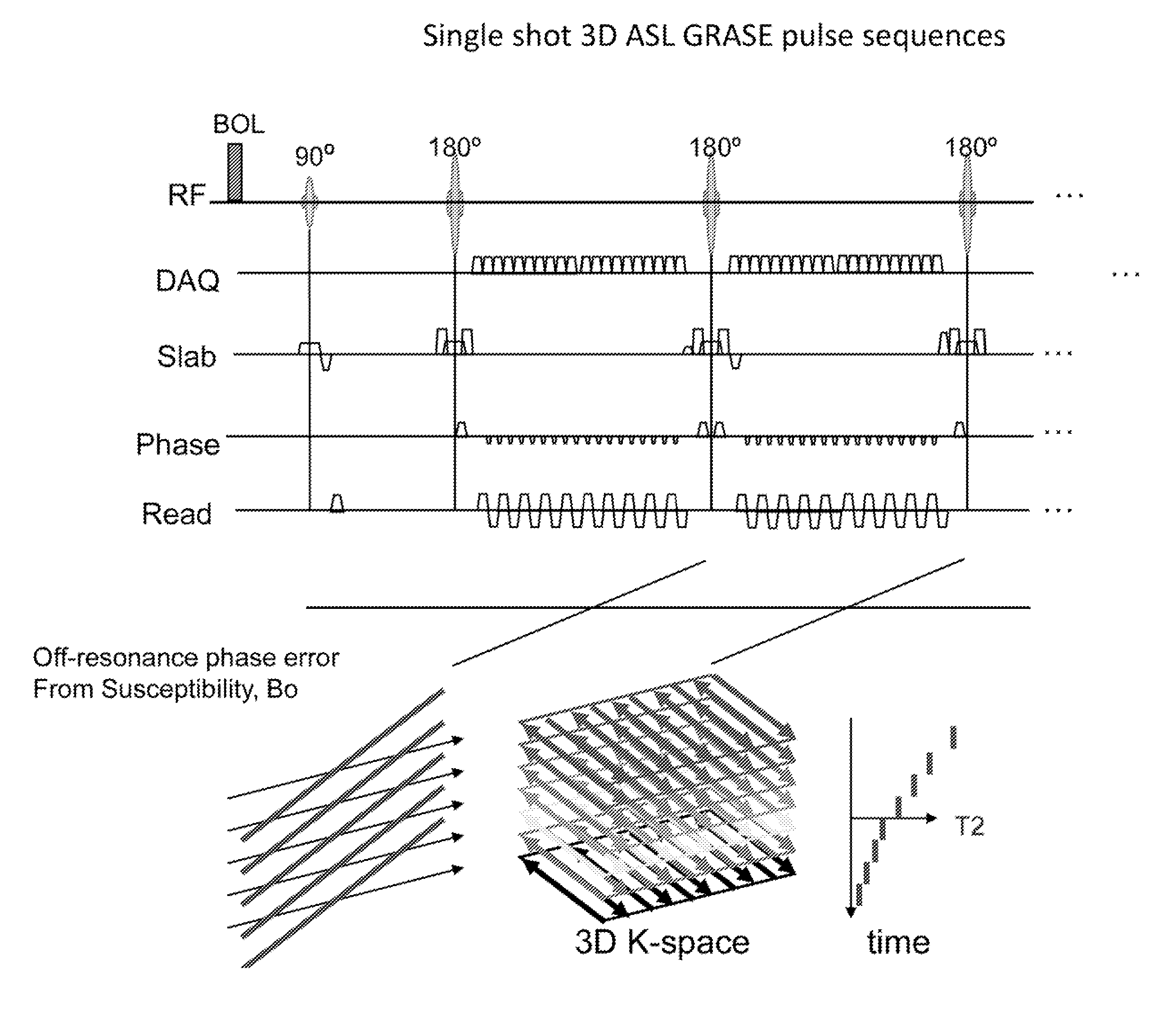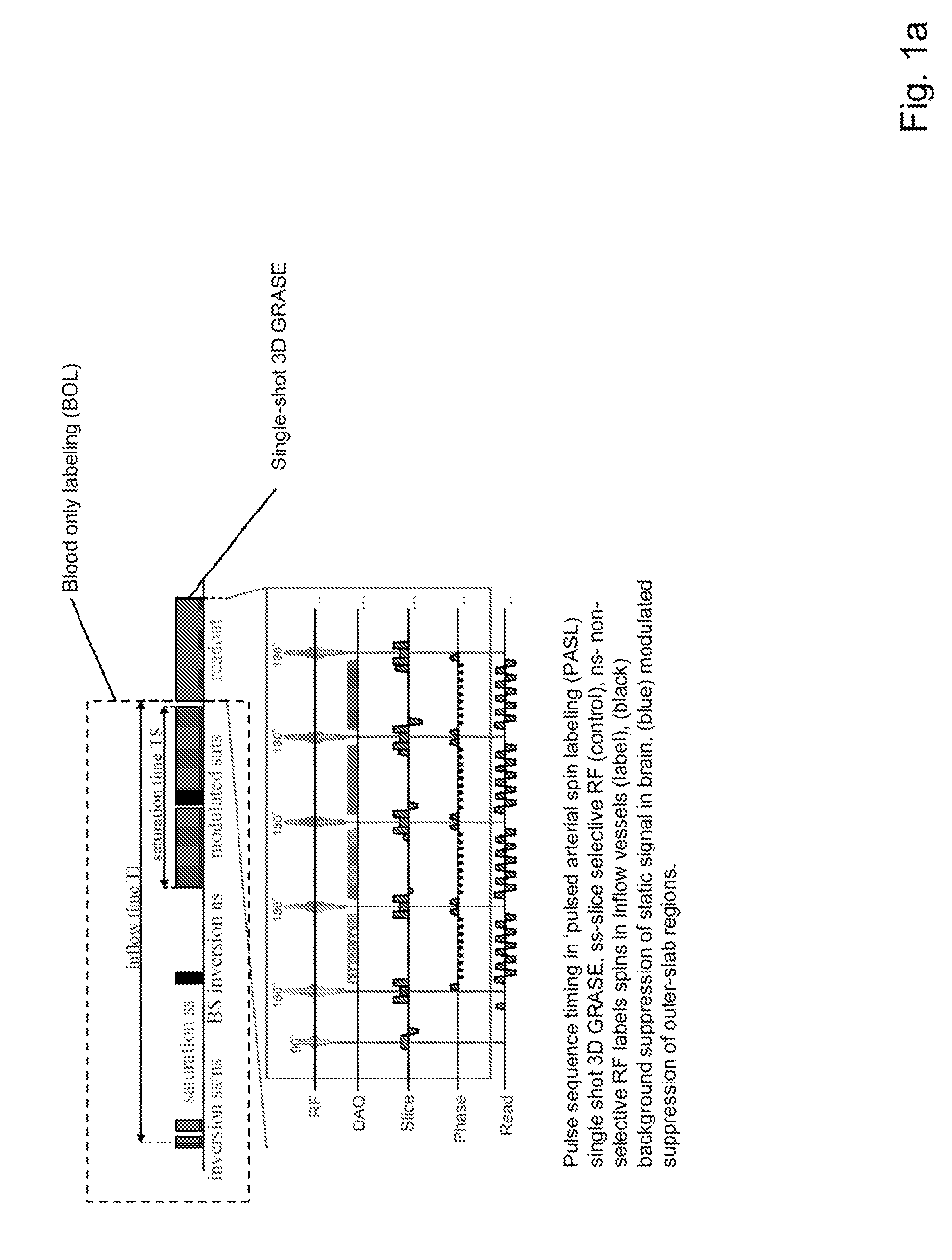Arterial spin labeled, segmented, interleaved 3D GRASE MRI
a technology of interleaved grase and arterial spin, which is applied in the field of arterial spin labeled, segmented, interleaved 3d grase mri, can solve the problems of high susceptibility artifacts, increased gradient refocusing frequency, and physiologic stimulation of peripheral nerve activity is a biological limitation, so as to prevent accurate quantitative measurements of cbf and susceptibility artifacts. , the effect of high
- Summary
- Abstract
- Description
- Claims
- Application Information
AI Technical Summary
Benefits of technology
Problems solved by technology
Method used
Image
Examples
Embodiment Construction
[0025]A novel approach is described to acquiring 3D images that have reduced distortion and susceptibility artifacts by means of performing steps that in combination have an effect of greatly improving the single-shot and multi-shot 3D GRASE ASL images.
[0026]The segmented BOL 3D GRASE sequence requires the acquisition of multiple segments of data with TR between each echo train. The data is used to make two different 3D images, one with blood and static tissue signal and the second 3D image being identical except for difference in blood signal labeling. The two 3D images are subtracted to eliminate the static tissue signal yielding a 3D image of only blood signal.[0027]A) More specifically: 1) the ASL 3D echo train is produced by at least 2 echo trains with recovery time (TR) between the sequences in which at least 2 of the echo trains have identical BOL blood labeling pulses or other effectively similar combinations of gradient pulses and RF pulses (pseudo continuous, continuous, o...
PUM
 Login to View More
Login to View More Abstract
Description
Claims
Application Information
 Login to View More
Login to View More - R&D
- Intellectual Property
- Life Sciences
- Materials
- Tech Scout
- Unparalleled Data Quality
- Higher Quality Content
- 60% Fewer Hallucinations
Browse by: Latest US Patents, China's latest patents, Technical Efficacy Thesaurus, Application Domain, Technology Topic, Popular Technical Reports.
© 2025 PatSnap. All rights reserved.Legal|Privacy policy|Modern Slavery Act Transparency Statement|Sitemap|About US| Contact US: help@patsnap.com



